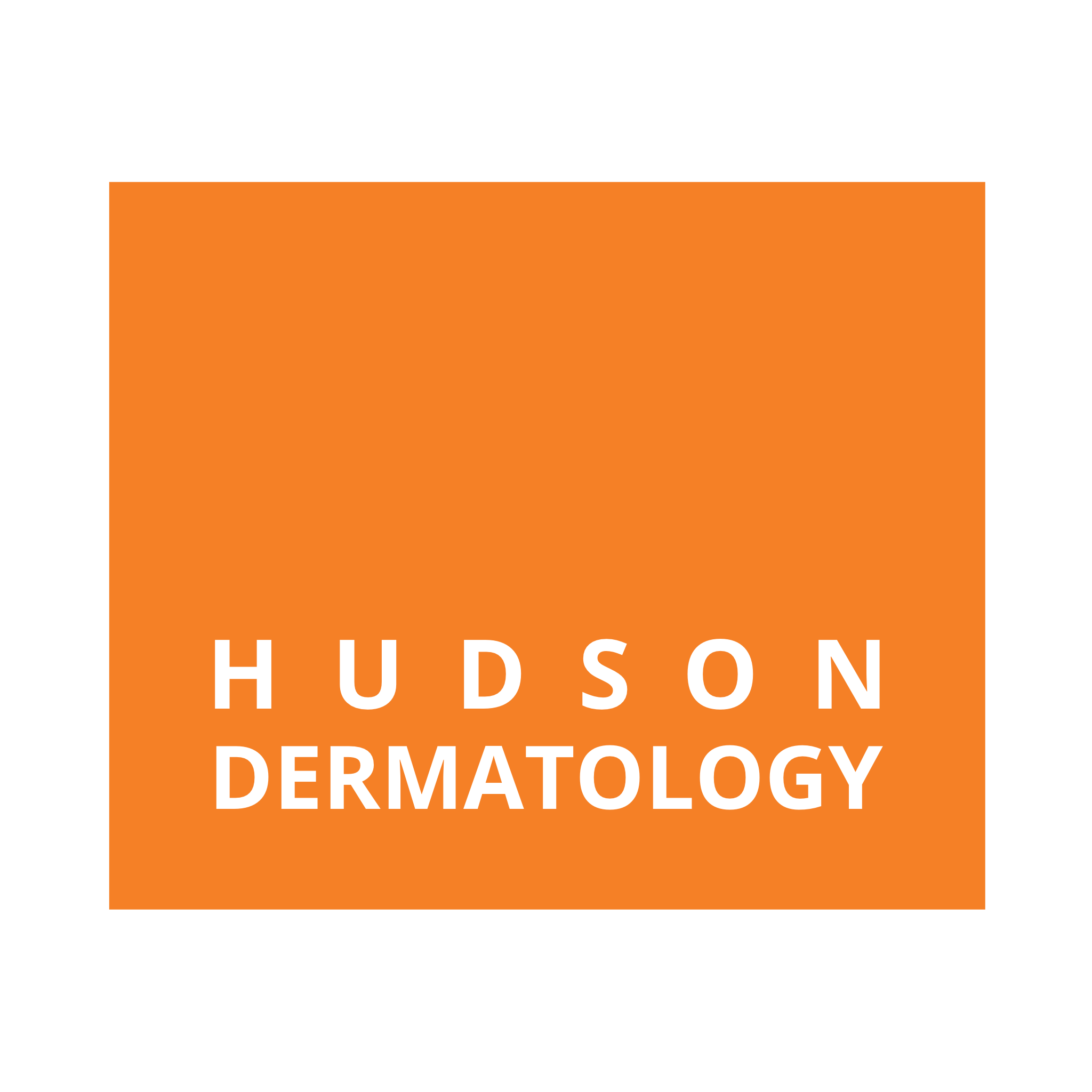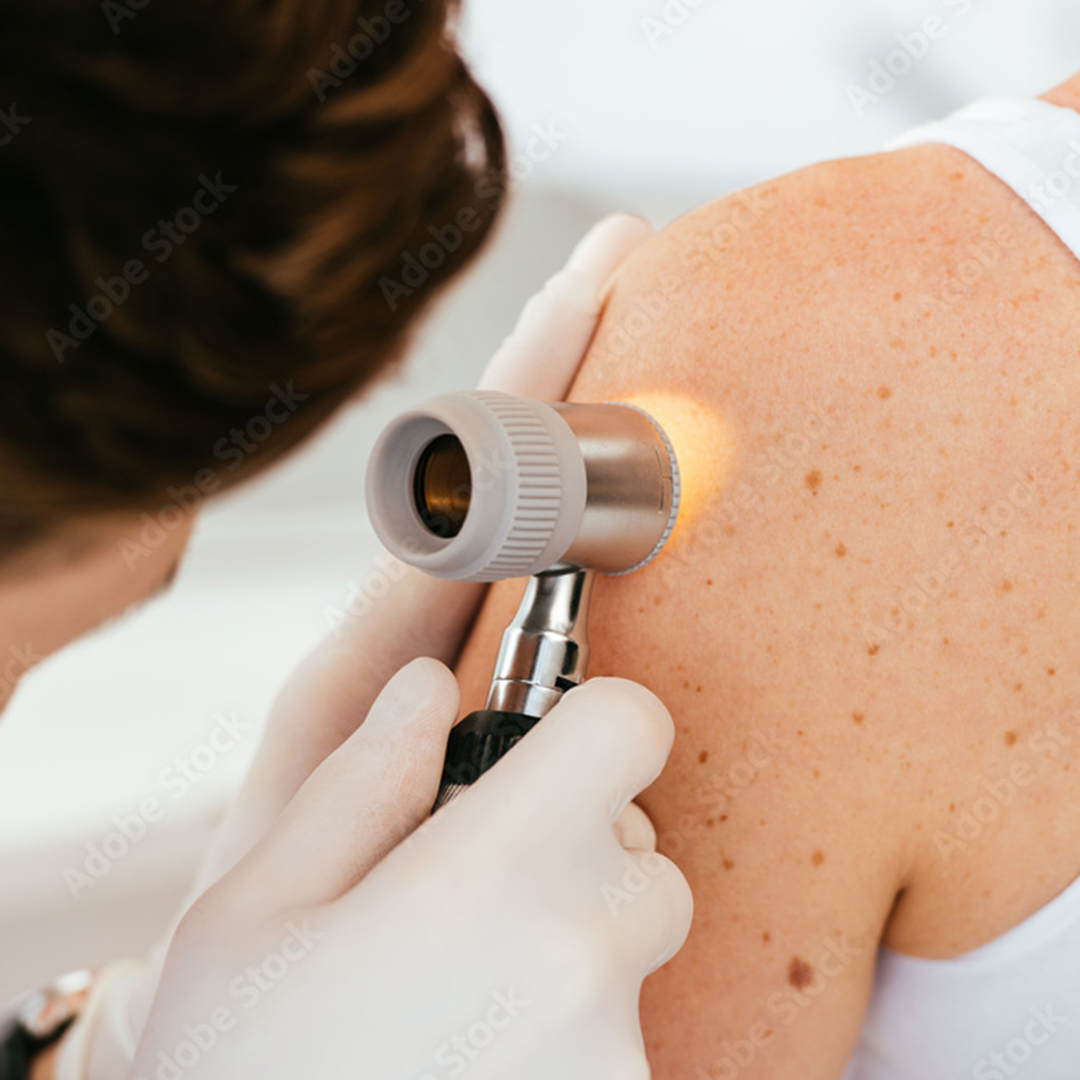Get Diagnosis and Treatment for Basal Cell Carcinoma, Squamous Cell Carcinoma, and Melanoma in NY
The most common form of cancer in the United States is skin cancer. NY’s Hudson Dermatology team daily works with patients who are seeking treatment for the disease, with one in five people developing it at some point in life.
Cancerous growths in the skin occur when mutations develop in the skin cell’s DNA, causing the growth of abnormal cells in the epidermis. While skin cancer is most likely to develop in areas most frequently exposed to sunlight—such as the face, scalp, ears, neck, and hands—it can occur anywhere on the body. Fortunately, when detected early, skin cancer is highly treatable with excellent outcomes for most patients.
Our board-certified dermatologists recognize that a cancer diagnosis can be an intense and even frightening experience for many people, which is why each Hudson Dermatology patient receives thoughtful and knowledgeable care through every step of the process—from the initial consultation to the successful final treatment and beyond. We offer guidance and support for patients through every phase of their health journey, and we are proud of the role we play in helping patients overcome any obstacle that stands in their path.
CONTACT US TODAY
Schedule a consultation for skin cancer at NY′s Hudson Dermatology. Use our online scheduler today.
What Are the Different Types of Skin Cancer?
There are three primary forms of skin cancer, each of which typically develops in the epidermis, or outermost layer of skin. These are the three most common types of skin cancer:
Basal Cell Carcinoma
This form of cancer typically appears in areas of skin that get significant sun exposure. It may appear as a bleeding or scabbing sore, a flat lesion that looks brown or flesh-colored, or a pearly or waxy bump. As suggested by the name, basal cell carcinoma forms in the basal cells, which are responsible for producing new skin cells as old skin cells die off. Basal cell carcinoma is not especially fast-moving and it does not often spread to other systems or parts of the body. It should still be treated as soon as possible, however, as it can be locally destructive.
Squamous Cell Carcinoma
Like basal cell carcinoma, squamous cell carcinoma tends to form in areas of the body that endure direct sun exposure, such as the face, hands, and neck. It tends to manifest as a red, scaly bump or a flat lesion with a crusted surface. This form of skin cancer develops in the squamous cells, which make up the middle and outer layers of skin. Faster-moving than basal cell carcinoma, squamous cell carcinoma can damage underlying tissues—including bone—or can spread to other organs if left to progress.
Sun damage can also result in the development of actinic keratosis, a rough lesion considered to be “pre-cancer.” While the cells in a so-called AK are not malignant, an untreated lesion can evolve into squamous cell carcinoma over time.
Melanoma
While melanoma only makes up about 1 percent of skin cancer diagnoses, it is much more aggressive than both basal cell carcinoma and squamous cell carcinoma. This cancer starts in cells that produce the pigment melanin, known as melanocytes. Melanoma can develop anywhere on the body, including skin that hasn’t been exposed directly to the sun, which indicates that it may have a genetic component. Melanoma is an aggressive and fast-moving cancer that can rapidly spread to other systems, structures, and areas of the body. A positive outcome depends on identifying it, diagnosing it, and starting treatment for melanoma as soon as possible.
Other Types
There are multiple other, more rare types of skin cancer, including Merkel cell carcinoma, cutaneous (skin) lymphomas, Kaposi sarcoma, skin adnexal tumors, and sarcomas.
YOU DESERVE EXCEPTIONAL PATIENT CARE
Every physician at each of Hudson Dermatology’s eight locations is board-certified and committed to providing quality skincare built on a foundation of advanced technology and techniques. All treatments—medical and cosmetic—are highly personalized and chosen for their safety and results.
YOU DESERVE EXCEPTIONAL PATIENT CARE

What Can Be Done to Prevent Skin Cancer?
Fortunately, there are many steps New York-area patients can take to help minimize their risk of developing skin cancer. First and foremost, avoid direct sunlight—especially during the middle of the day when the sun’s rays are at their strongest. When going outside, always wear sunblock with an SPF of at least 30, even on cloudy days. Wear protective clothing and sunglasses whenever possible. Some brands sell clothing specifically designed to offer protection from the sun’s damaging rays.
Avoid tanning beds, since the ultraviolet (UV) radiation they emit increases the risk of developing skin cancer. Additionally, certain medications including certain antibiotics and diuretics can make your skin more sensitive to light, so be sure to ask your doctor about the side effects of any new medical prescriptions. Lastly, perform regular examinations of your skin to familiarize yourself with any freckles, moles, birthmarks, or bumps. If you notice any changes, schedule an appointment with your dermatologist to discuss your concerns. The Hudson Dermatology team offers thorough full-body scans.
When performing self-examinations, look for the ABCs of skin cancer:
- Asymmetry: A growth or mark in which one half does not match the other half.
- Borders: Marks with irregular borders including blurred or scalloped edges or outlines.
- Color: Most marks should be a single color, but a birthmark or mole with multiple colors or changing colors should be reported to your dermatologist. A cancerous mole may stand out like an “ugly duckling.”
- Diameter: A growth that increases in size should be noted and discussed with your healthcare provider, especially if it is larger than a pencil eraser.
- Evolution: Any mark on your skin that has changed in size, color, or appearance could be an indication of a cancerous growth.
What Skin Cancer Treatments Does Hudson Dermatology Offer?
Skin cancer is a highly treatable condition, especially if detected and treated early. Because of this, it is essential that patients perform regular self-examinations and seek medical assistance as soon as they notice a change or cause for concern.
When it comes to skin cancer, NY’s Hudson Dermatology offers a variety of treatment options. The ideal treatment option for a patient will depend on a variety of factors, including the type of skin cancer, location, and depth, as well as patient preference.
Here are some of the most effective skin cancer treatment options available at Hudson Dermatology:
Cryosurgery
Typically utilized for small areas of skin cancer detected early, this method involves freezing cancerous bumps and lesions with liquid nitrogen.
Electrodessication and Curettage (ED&C)
This treatment process typically begins with an injection of a local anesthetic, after which the physician scrapes away abnormal tissue with a surgical tool called a curette, then cauterizes the area to minimize bleeding.
Excision
This is a fairly straightforward and frequently utilized skin cancer treatment option, during which the physician physically cuts out the cancerous tissue and a certain amount of healthy skin adjacent to cancer.
Mohs Surgery
This is a popular and highly effective treatment choice for cancers that occur in highly visible, delicate, or difficult to heal areas such as on the face, hands, or below the knee. During the Mohs surgery process, a specially trained dermatologist removes the cancerous lesion one thin layer at a time, examining each layer under a microscope to ensure that the entire cancerous growth is removed. If any cancer cells are detected in a layer, another layer will be taken, focusing on the specific area where malignant cells are spotted. In this way, all of a lesion’s cancerous cells can be reliably removed—without cutting away excess skin. Hudson Dermatology’s Ross Zeltser, MD, FAAD, FACMS, is double board-certified in dermatology and Mohs micrographic dermatologic surgery. He is one of the first physicians in the world to earn board certification in Mohs micrographic dermatologic surgery. Dr. Zeltser has been performing Mohs in the Hudson Valley since 2007. He is one of the top Mohs surgeons by case volume experience in New York State.
For more information about skin cancer, visit the American Academy of Dermatology’s page on the condition.
What About Superficial Radiation Therapy (SRT)?
Receiving a skin cancer diagnosis can be emotionally challenging, and choosing the right treatment is crucial. Dermatologists have long had numerous treatment options at their fingertips. At the moment, Superficial Radiation Therapy (SRT) and Mohs Micrographic Surgery are two that are in somewhat opposing corners. Here, we compare these treatments, detailing the pros and cons, and explain why Hudson Dermatology chooses not to offer SRT at this time.
CONTACT US TODAY
Contact the Hudson Dermatology team now to set up a consultation for skin cancer in NY. Dutchess, Westchester, Columbia, Ulster, Putnam, Rockland, and Orange County residents can schedule an appointment via our online scheduler.
FULL-SERVICEDERMATOLOGY
With offices in Cornwall, Fishkill, Hudson, Kingston, Poughkeepsie, Somers, and Tarrytown, Hudson Dermatology offers the highest quality of care centered around medical dermatology, cosmetic dermatology, and pediatric skincare. Patients in New York’s Hudson Valley area can depend on the professional team at Hudson Dermatology to satisfy all their medical and cosmetic skincare needs.
FULL-SERVICEDERMATOLOGY
With offices in Cornwall, Fishkill, Hudson, Kingston, Poughkeepsie, Somers, and Tarrytown, Hudson Dermatology offers the highest quality of care centered around medical dermatology, cosmetic dermatology, and pediatric skincare. Patients in New York’s Hudson Valley area can depend on the professional team at Hudson Dermatology to satisfy all their medical and cosmetic skincare needs.











